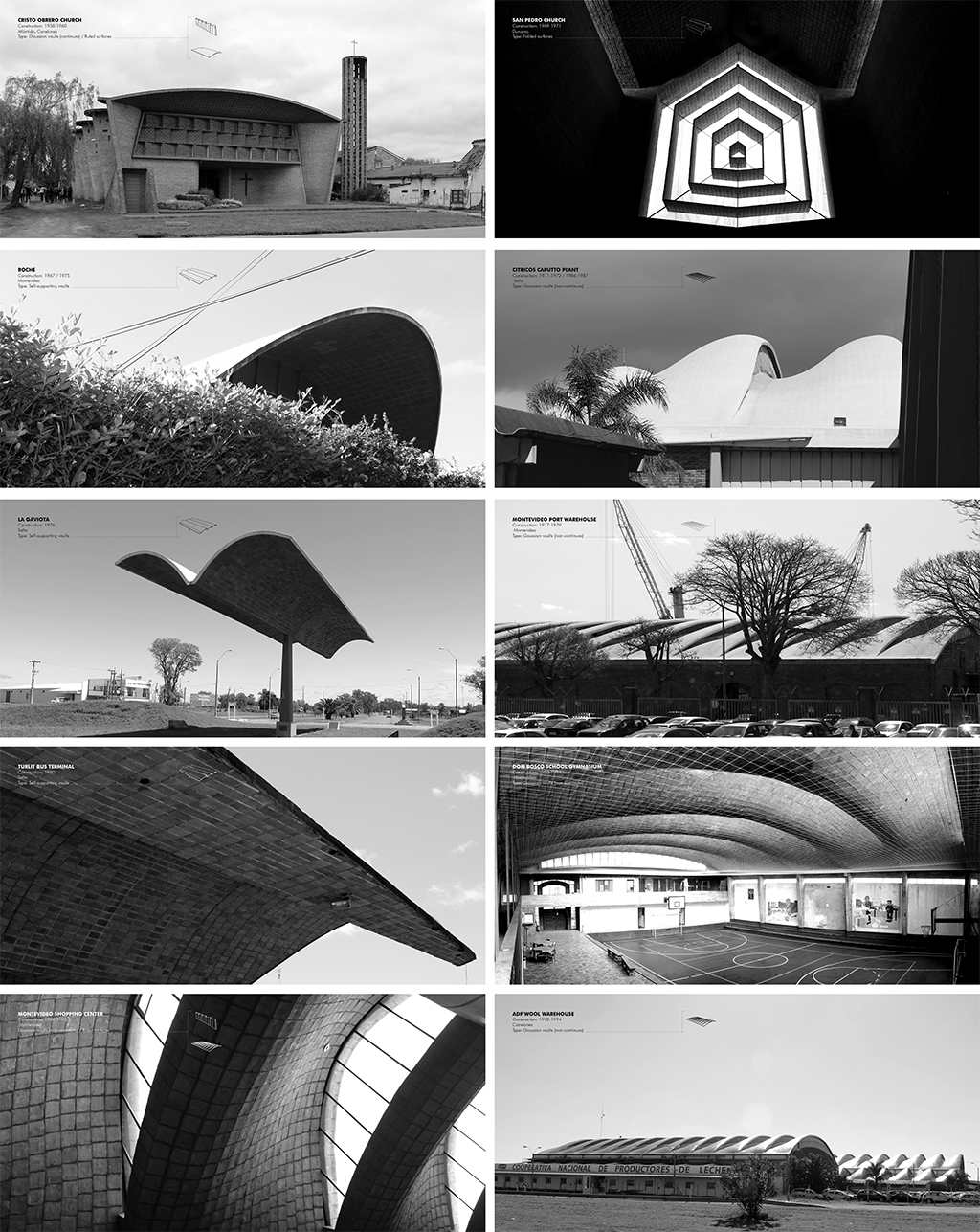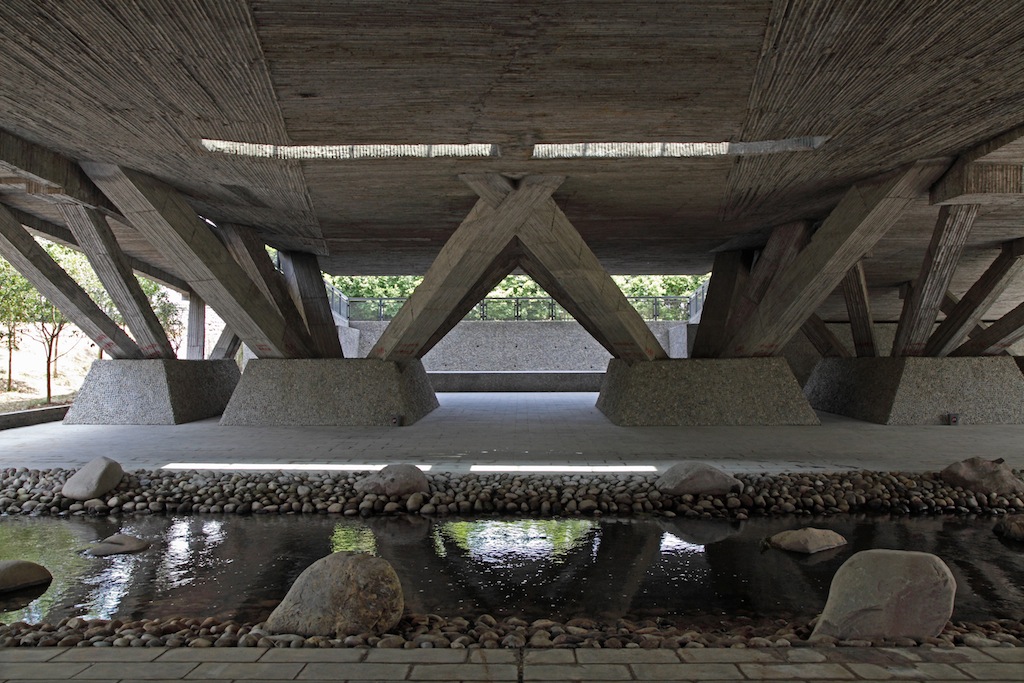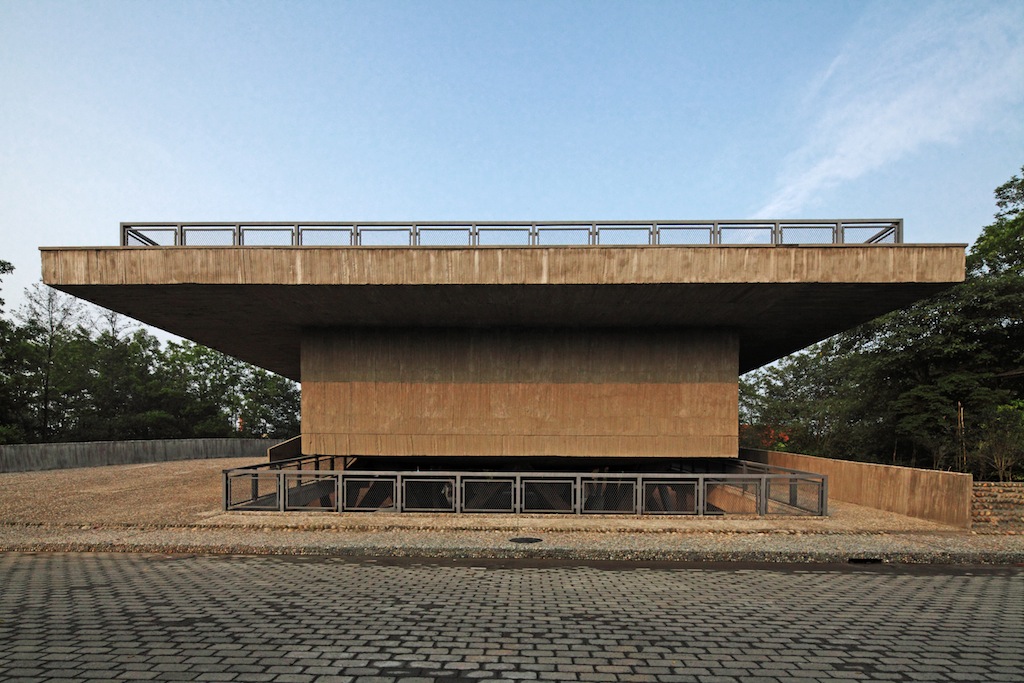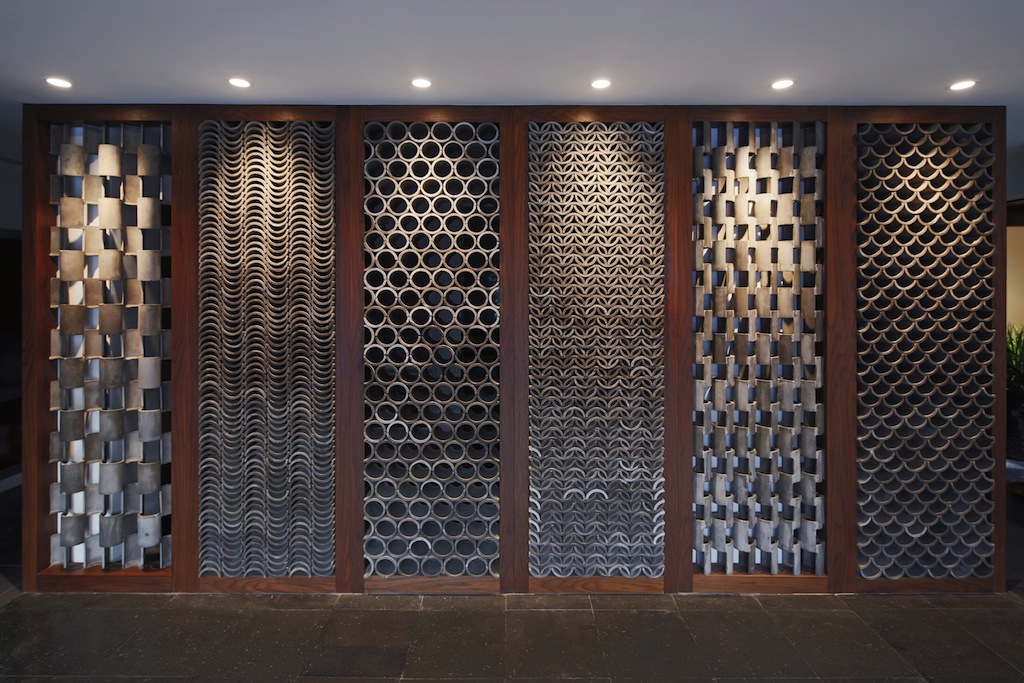In April 2014, when Yung Ho Chang delivered a Current Work lecture detailing the work of his Beijing-based Atelier Feichang Jianzhu (FCJZ), the League asked Michael Bell, now a professor of architecture at Columbia University, to sit down and discuss some of their shared history. Both studied architecture at the University of California, Berkeley, in the 1980s, and both have taught together at Rice University. The lively and intimate conversation covered many topics, including their architectural mentors and influences, as well as Chang’s decision to move into practice after many years of drawing and teaching architecture.
Michael Bell: At some level I feel like I’ve known you forever. At the same time, I don’t remember explicitly when I met you. Though you are currently practicing in China, I’ve often thought you are very at home in the United States. In fact, you were at Rice until 1995 or ‘96. And you really weren’t building.
Yung Ho Chang: No, I was drawing. And I was very happy drawing until that point.
Bell: I don’t remember you ever being frustrated with drawing.
Chang: No, and practice is still today a lot more frustrating than it is making drawings.
Bell: When you left teaching at Rice, where I was too, I don’t remember you announcing, “I have a big decision to make.” Or, “I’m changing my life.” I just remember you saying, “I’m leaving.”—Nicely, you said it.
Chang: Well, I’m not good at doing anything ceremonial, if that’s the way to put it. In fact, I wasn’t sure if I wanted to practice, for a while. And then a number of things made me change. One actually was Lars Lerup. I was teaching at Berkeley—and you were there too—and I was thinking maybe I could do some built work—meaning installation, not buildings. I didn’t have clients anyway. And then Lars said, “No, no, you have to get out of the darkroom and come into the sun.” He pushed me to think about practice, and also to be more socially conscious as a person—which, of course, I wasn’t. He was interested in Marxist criticism and theory. At the time, I wasn’t very interested in politics. However, I like to say I was becoming a kind of lefty-western intellectual; I wanted to be one.
Bell: I can’t remember you ever commenting on American politics, maybe occasionally. But I can imagine Lars saying that to you, and being very sincere. I know he thought the world of you, but was he really concerned that you would stay too private by drawing?
Chang: I really had kind of a split situation in terms of role models, between Lars and Stanley Saitowitz. I really looked up to Stanley as a practitioner.
Bell: I remember Lars was always drawing and he fervently believed that ideas expressed in drawings could change architectural practice. And he does practice in this way, as did people like John Hejduk and Léon Krier and many others. But you were really drawn to Lars in terms of ideas, whether it was surrealism, or Dada in art. And then Stanley’s influence, on the other side, was about practice much more directly. I remember he did those two miraculous houses in South Africa before he was a student.
Chang: And the Holocaust Memorial in Boston.
Bell: Yes, I remember going to the opening of the memorial in Boston and we later worked to present it in a book we published of his work at Rice. But if anybody builds in a way that’s a little like you, in terms of directness, it might be Stanley. Is there really such a strong divide between the two influences, in terms of their effect on your work?
Chang: There is a fine line. Because for me, drawing was a very important instrument not only to realize architecture, but also to think about architecture. I’ve come to appreciate that dual role. You know, I didn’t draw for almost 20 years because I really wanted to be a proper practitioner in China. Now I draw again.
Bell: At Berkeley, your drawings were very well known. You drew with the level of craftsmanship and care that John Hejduk would have absolutely understood and respected. It wasn’t just drawing.
Chang: You once told me, because you very much saw your own work and thinking as structured by the development of Western architecture, that I was “free.” You meant the result of my fragmented upbringing, the Cultural Revolution, and the Marxist ideology, etc. I don’t know that I was so free, but I was very open-minded. So a lot of influences came in.
Bell: You let them in, though, in a quiet way. I remember that you had a calmness and reserve about you. And I thought the bigwigs in American academia were very good at provoking people, and they sincerely wanted to. But you were calmer about it. You didn’t seem to be as easily provoked. I am thinking about the younger Rem Koolhaas and Peter Eisenman in the House X days, and Noam Chomsky. You were absorbing all of that while you were also dealing with this fragmented condition that you had been going through. Were you aware of that?
Chang: I tried to absorb them. But Eisenman and Chomsky were too hard for me. I was able to get quite a bit of the way that Rem was thinking.
Bell: In the era of Delirious New York?
Chang: Yeah. I loved it and read it as a novel. The “plot” of the skyscraper, the “Culture of Congestion,” you know? Eating oysters with boxing gloves on the ninth floor of the Athletic Club, I remember that image so well.
Bell: Who are some of your other influences?
Chang: I have such a long list of architects I really look up to today. Hejduk is the only name on there who didn’t build much. His drawings were so poetic; he’s one of the people who make me really understand the poetry of architecture. Otherwise they are all architect/craftsmen types. Number one is Sigurd Lewerentz—St. Peter’s Church of Klippan was extremely important to me. Sverre Fehn and Kazuo Shinohara are also both very, very important to me. As well as Eladio Dieste . . .
Bell: So is it materials?
Chang: It’s material; it’s craft; it’s poetics.

Selected Eladio Dieste projects. From top to bottom and left to right: Church of Cristo Obrero, Church of San Pedro, Roche, Caputto Fruit Plant, “La Gaviota”, Montevideo Port Warehouse, Turlit Bus Terminal, Gimnasio Don Bosco, Montevideo Shopping Center, ADF Wool Warehouse
Bell: What do you mean by craft? What’s your definition of the term?
Chang: Well, for me, it’s this: At one time, of course, buildings were built with hands. Today in China, to a large extent, they are built by hand, but without craft.
I think about Lewerentz’s St. Peter’s Church, which has a kind of a roughness that was required to push ahead some of his ideas. Lewerentz had to fool the experienced master masons in order to get what he wanted. That was an amazing thing. He told these very skilled masons in Sweden that the bricks were going to be covered by plaster, so they didn’t have to be perfect. For Lewerentz, craft doesn’t mean accepting the technology that is available. It’s about really pushing it. Pushing it to the point where it may fail. I think that’s interesting.
Bell: I’ve begun to hear you talk about not accepting building conditions as givens. The tectonics available to you with one client are very different with another; the conditions in one part of China are different than in another. You’re not so willing to let it be simplified any more—it’s much more nuanced.
Chang: I think people outside of China tend to have a fairly simplistic understanding of the conditions of architectural practice in the country. For example, I once went to an event in Taipei in which representatives from Los Angeles and from China were presenting their architectural work. The idea was essentially that the “free-spirited” Los Angeles architects could help the Asian architects to “open up,” but by the end of the presentations I think many of the participants felt that the Asian conditions were actually more free than the American environment. For instance, at the time the freedom we had to design window systems was much greater, whereas if one tried to do the same in the US you’d have to pay a lot more in liability insurance.
Bell: There is the perhaps larger question here of the philosophical difference between two very different understandings of architectural history and theory. You have spent your career traversing this boundary—born and raised in China, then studying and teaching in the US, now practicing in China—at one level you are a global figure, on another you’re also very much a Beijing figure. In a recent interview you made the point that you feel at home in China and you want to stay more focused there, but has this moving across countries over 15 years changed your point of view?
Chang: Well I have to correct you on one point. I’m not very at ease with the new China. Perhaps now that I am getting older, I am becoming nostalgic, but I actually do miss the Beijing I grew up in. You know, the nice quiet courtyard houses and the hutongs, they’re completely gone now. Architects coming from all over the world see the new Beijing and get very excited about all the development potential. But I think there are other kinds of architectural opportunities to pursue in China besides the big, iconic, flashy stuff. And that is what makes me feel like I need to stay small for now.
Bell: What does that mean to you, to stay small?
Chang: It comes back to craft, to tectonics—the act of building has become really interesting. Building is a continuous crisis, from digging a hole in the ground to the completion of the building. Every step along the way has the opportunity to teach you something. I guess I am keeping my head down, in a way, because I’m not interested in larger trends. I’m not interested in the cultural zeitgeist anymore.
Bell: You seem to be interested in a kind of everyday aspect of building architecture, of just taking the next step. You pick up the stone, you put the stone down. You pick up the next stone, you put the next stone down. I feel like this is unique in your work. Somewhere along the line I feel as though it is a kind of reaction to the super-capitalization of the last 15 years in China, and it comes through in a more plaintive way of building. I think you do seem to be more fervently reacting to the Beijing from your past. I know that the Cultural Revolution was a huge disruption in your life personally in very serious ways. Is that something you would like to discuss more? Is it more clear to you now, looking back, how that experience has affected you?
Chang: Yes, because for a while I was more optimistic about it. I talked to some friends of similar age—one of them is an important artist who I remember talking with here in New York City. We talked about how the Cultural Revolution made us lose our belief in authority. So it was a liberating experience in a way. So then we became not only free, but also almost fearless. But at the same time, there was a lot of anger and I think it was really destructive to the spiritual life of the country, and produced a whole generation of individuals lacking a basic kind of trust for one another. Myself included. I have a lot of this cautiousness towards strangers, which I don’t like. I’m very much a part of that society in that way.
Conversation edited and condensed.
*
Yung Ho Chang is a founding principal of the Beijing-based Atelier Feichang Jianzhu (FCJZ), established in 1993. A professor of the College of Architecture and Urban Planning at Tongji University, and a professor and former Head of the Architecture Department at MIT, Chang, who was educated in China and the United States, was also a professor and founding head of the Graduate Center of Architecture at Peking University. He currently serves on the Pritzker Prize Committee. Chang has received numerous awards, including first place in the Shinkenchiku Residential Design Competition, the UNESCO Prize for the Promotion of the Arts, and the Academy Award in Architecture from the American Academy of Arts and Letters. Chang was awarded the League Prize in 1992.
Michael Bell is a professor of architecture at Columbia University. Bell chairs the Columbia Conference on Architecture, Engineering and Materials and is also Director of the Master of Architecture Program Core Design Studios. Bell’s design work has been exhibited at the Museum of Modern Art, New York; The Venice Biennale; The Yale School of Architecture; The University Art Museum, Berkeley; and at Arci-Lab, France. Bell has received four Progressive Architecture Awards, and work is also included in the permanent collection of the San Francisco Museum of Modern Art. Bell was an Architectural League Emerging Voice in 1999.
Explore
In conversation: Farshid Moussavi and Elizabeth O’Donnell
A dialogue about architect Moussavi’s work, teaching, and research.
In conversation: Mariana Ibañez and Simon Kim with Elissa Goldstone
The winners of Folly 2015 engaged in an email conversation with Elissa Goldstone, the exhibition program manager at Socrates Sculpture Park.
In conversation: Guy Nordenson and Thomas Phifer
The designers reflect on their history of collaboration.



